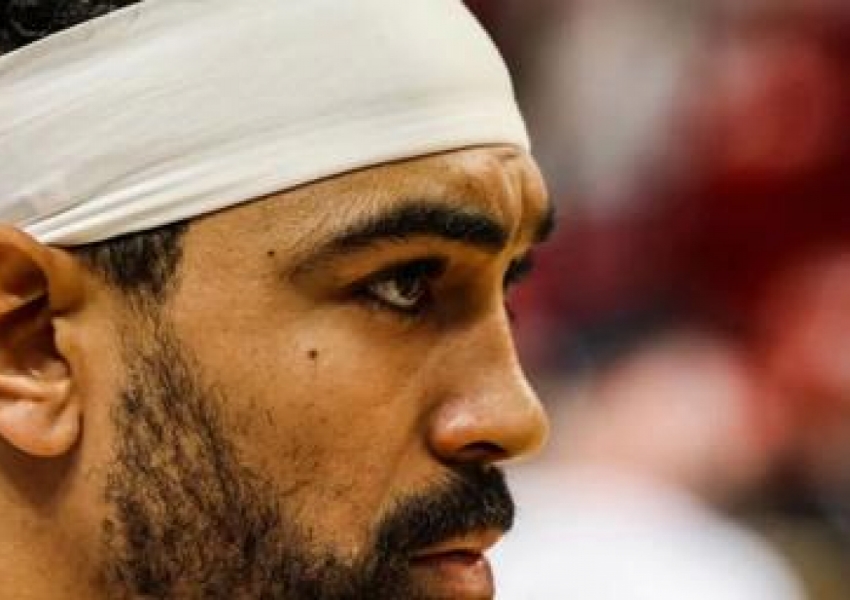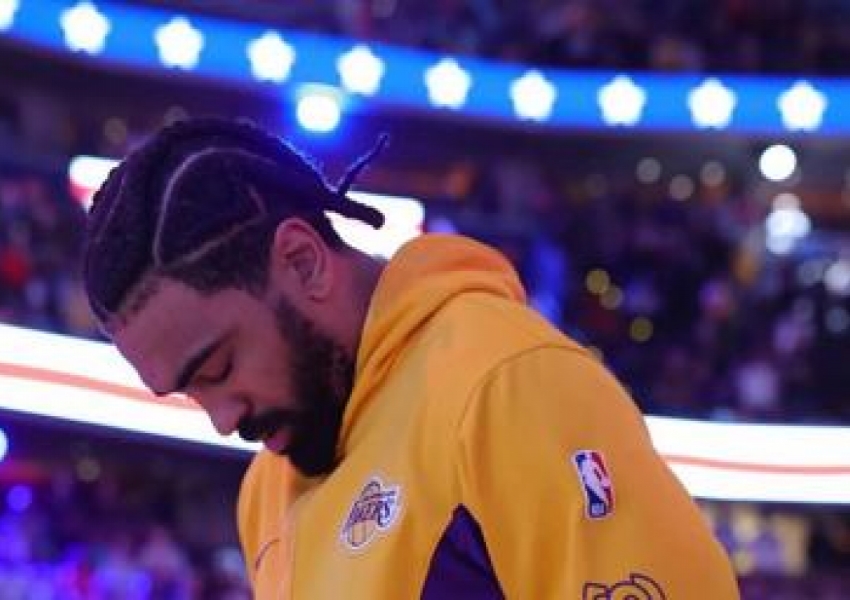2.8 PPG! $10 Million Vincent—How Did the Lakers Get Duped?
The Los Angeles Lakers have been on a roller coaster ride this season, with their up-and-down performances leading to a series of wins and losses. On December 5th, the Lakers broke a three-game losing streak with a convincing 119-101 win over the San Antonio Spurs. While many key contributors such as LeBron James, Anthony Davis, and Austin Reaves delivered solid performances, there was one glaring absence from the box score: Gabe Vincent. The guard, who was expected to play a key role in the Lakers’ backcourt rotation, barely saw the floor in this game, logging only six minutes in the second quarter with zero points, zero assists, and zero rebounds to his name.

For those who have been paying attention, this performance is just the latest chapter in a troubling season for Vincent. Signed to a three-year, $33 million contract in the summer of 2023, the Lakers were hoping they were adding a reliable two-way player who had just played a pivotal role in the Miami Heat’s surprise run to the NBA Finals. Instead, Vincent has largely been a non-factor this season, struggling to find his rhythm, particularly on offense. In fact, his performance this season has been so underwhelming that he’s now on the brink of falling out of the Lakers’ rotation entirely.

Vincent’s Decline: From Finals Hero to Benchwarmer
Gabe Vincent’s rise to prominence came in the 2023 playoffs when he played a crucial role in Miami’s stunning run to the Finals. Over 23 postseason games, Vincent averaged 12.7 points, 3.5 assists, and 0.9 steals while shooting 37.8% from three. His performance on the biggest stage led many to believe that the Lakers were making a savvy signing when they added him to their roster. Unfortunately, what the Lakers didn’t foresee was a significant regression in Vincent’s play, both offensively and defensively, after a solid postseason run.

Vincent’s struggles started early in the 2023-2024 season. Despite being a key offseason acquisition, his shooting has been abysmal. Through 18 games this season, Vincent is averaging only 2.8 points, shooting 30.3% from the field and 20.9% from three. For a player brought in to provide floor spacing and secondary playmaking, these numbers are unacceptable. His true shooting percentage is a shockingly low 37.6%, ranking him 305th out of 309 players in the league, a statistic that has been difficult for the Lakers to ignore.
The Benching and Lack of Impact
The nadir of Vincent’s season came against the Spurs, when he played a career-low 6 minutes and didn’t register a single stat. This was his lowest playing time of the season, a far cry from the 15-20 minutes per game he was expected to contribute when signed. In prior games, Vincent has struggled to make an impact, with multiple outings where he’s failed to score a single point. Over the past month, he’s had five games where he’s recorded 0 points, including an 18-minute outing against the Pistons where he didn’t even attempt a shot, a 13-minute stint against the Grizzlies where he missed all six of his attempts, and a 22-minute performance against the Pelicans where he went 0-2 from the field.
For a team like the Lakers, who are trying to contend for a championship, having a player signed to a $10 million per year contract that can’t even crack double figures in minutes is a huge problem. The decision to give Vincent such a lucrative contract in the first place is starting to look like a costly mistake, especially given the lack of viable production from him.
The Stats Speak for Themselves
Vincent’s numbers tell the story of a player who has simply not been able to find his rhythm. His shooting numbers have plummeted across the board compared to his best years with the Miami Heat. The drop-off in shooting from the three-point line is particularly concerning. Last season, Vincent shot 33% from beyond the arc, which is respectable for a player who isn’t known for being a high-volume shooter. This season, however, his three-point shooting has dropped to a career-low 20.9%. His struggles from deep have been compounded by poor shot selection, especially when it comes to wide-open opportunities.
Even more troubling is Vincent’s inability to impact the game outside of scoring. He has averaged just 0.9 rebounds and 0.6 assists per game, far below what would be expected from a player who is given significant minutes. His ability to contribute defensively has also been inconsistent. While Vincent has the quickness and defensive awareness to be a solid perimeter defender, his 1.5 steals per 36 minutes this season are down from last year’s 1.9 per 36 minutes, and opposing players have had an easier time scoring when matched up against him. On defense, his numbers are significantly worse than what the Lakers saw in him during his time in Miami.
The Contract Situation: A Potential Albatross
It’s one thing to struggle on the court, but the real problem for the Lakers lies in Vincent’s $11.5 million salary for the 2024-2025 season. After signing a three-year, $33 million deal, Vincent has a guaranteed contract for next season, meaning the Lakers are stuck with him unless they can find a trade partner. It’s a difficult situation for Los Angeles because, while Vincent is underperforming, his contract is too large to simply waive without significant financial implications. The Lakers can’t afford to throw away that much money and must hope Vincent can regain his form from his Miami days. However, his future with the team is looking increasingly uncertain as he continues to struggle.
The Lakers’ History of Questionable Mid-Tier Signings
The signing of Gabe Vincent is far from the first time the Lakers have struggled with mid-tier acquisitions. Over the past few years, they have had a series of disappointing signings that have failed to pan out as expected. In 2020, the Lakers signed Montrezl Harrell to a two-year, $19 million deal. Despite winning Sixth Man of the Year the previous season, Harrell was a poor fit for the Lakers and was traded away in the following offseason. In 2021, the Lakers signed Kendrick Nunn to a two-year, $10 million contract, but he missed the entire season due to injury and has barely contributed when healthy. Lonnie Walker IV was signed in 2022 and gave the Lakers some decent performances, but he too was eventually replaced. Now, Gabe Vincent has joined the list of underwhelming signings that have failed to live up to expectations.
It’s becoming increasingly clear that the Lakers’ mid-level exceptions and free-agent signings have not been able to provide the consistent production they were hoping for. As the team tries to build around LeBron James and Anthony Davis, these contracts are holding them back from making meaningful improvements to their roster.
What’s Next for Vincent and the Lakers?
With his spot in the rotation uncertain, Vincent is now facing a make-or-break moment in his career with the Lakers. He needs to show he can contribute offensively, improve his shooting, and provide steady defense if he hopes to keep his place in the lineup. If his struggles continue, the Lakers may have no choice but to explore trade options or look for ways to reduce his playing time.
As for the Lakers, they’re in a difficult spot. They have invested significant money in Vincent, but unless he can turn things around, this will be another failed free-agent signing in a series of missteps. The question remains: Can Gabe Vincent rediscover his form, or have the Lakers been duped by a one-off playoff performance? With the season still early, only time will tell if the Lakers can find a way to make this contract worthwhile or if it will turn into another financial burden that could hinder their championship aspirations.
Copyright Statement:
Author: focusnba
Link: https://www.focusnba.com/sports-blog/28-ppg-10-million-vincenthow-did-the-lakers-get-duped.htm
Source: FocusNBA
The copyright of this article belongs to the author. Reproduction is not allowed without permission.
Recommended Blog
- The MVP Race Is Over? How Nikola Jokic Continues to Redefine Dominance at 29
- Out for the Season! Another Max Player Collapses with Injury, This Time It's Gu Quan
- Thank You, Zhou Qi! 12 Shots to 20 Points! Finally Becoming the Starting Core…
- 26 Points, 17 Rebounds! Decides to Join Forces with Doncic! The NBA’s Best “Finisher” Center…
- 8-10 Record! It’s a Mess, the Timberwolves Are a Complete Disaster! Edwards Reveals Team's Internal Struggles…
- Explosion! Ding Yanyu Hang's New Home! The CBA Has Waited a Whole Year...
- The Lakers Are Coming! Another Star on the NBA Trade Market – The West Is About to Get Even Wilder
- 0-for-8 Shooting! Yuki Kawamura’s Struggles Continue—Are the Grizzlies at Their Limit?
- Trade Rumors Swirl! Bucks Eye 43-Point Scorer—Eui-sik Choi's Mentor Could Be on the Move
- Shanghai Triumphs Over Liaoning: Wang Zhelin Returns with 13 Points in Comeback
Hot Blog
- Tension in New York? Mikal Bridges Calls Out Thibodeau’s “Plantation-Style” Rotation!
- Kevin Durant = Three First-Round Picks? In Just Two Years, the Suns Lost Big!
- Major Decline! What Is De'Aaron Fox’s True Level with the Spurs?
- Completely Out of the Rotation! Why 25-Year-Old Cam Reddish Can't Get on the Court Anymore
- A Miraculous Buzzer-Beater—But What Level Is Kawhi Leonard Really At Now?
- 4,000 Threes! Just How Impossible Is Stephen Curry’s Latest Record?
- $110 Million Over Two Years—Butler Was Worth Every Penny
- $293M Supermax and an MVP? Is There Any Doubt Left for Shai Gilgeous-Alexander?
- $418M for Luka Dončić? Is the Lakers' New Star Worth It?
- 31-21-22! Did Jokic’s Historic Triple-Double Just Reignite the MVP Race?